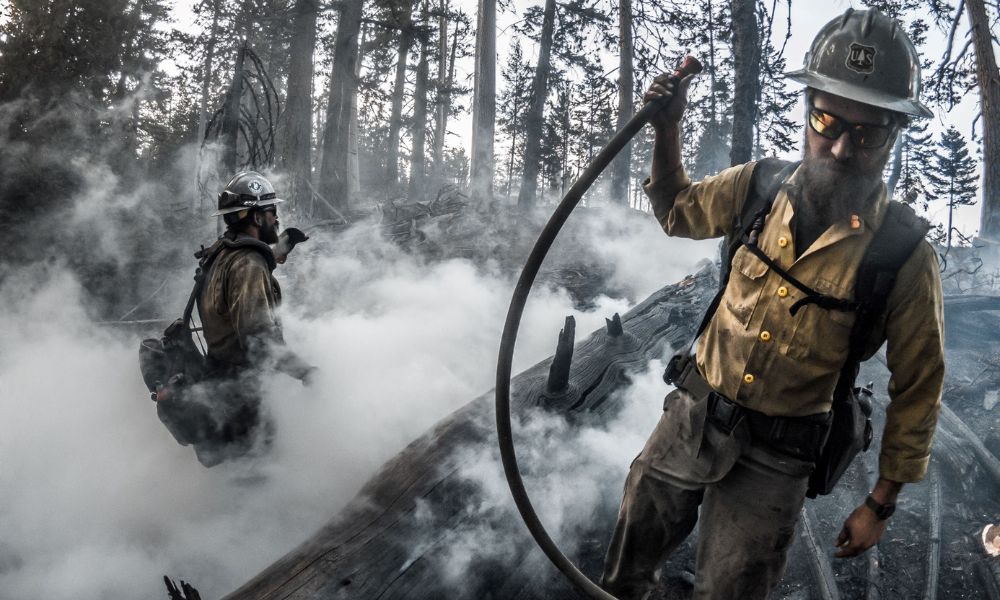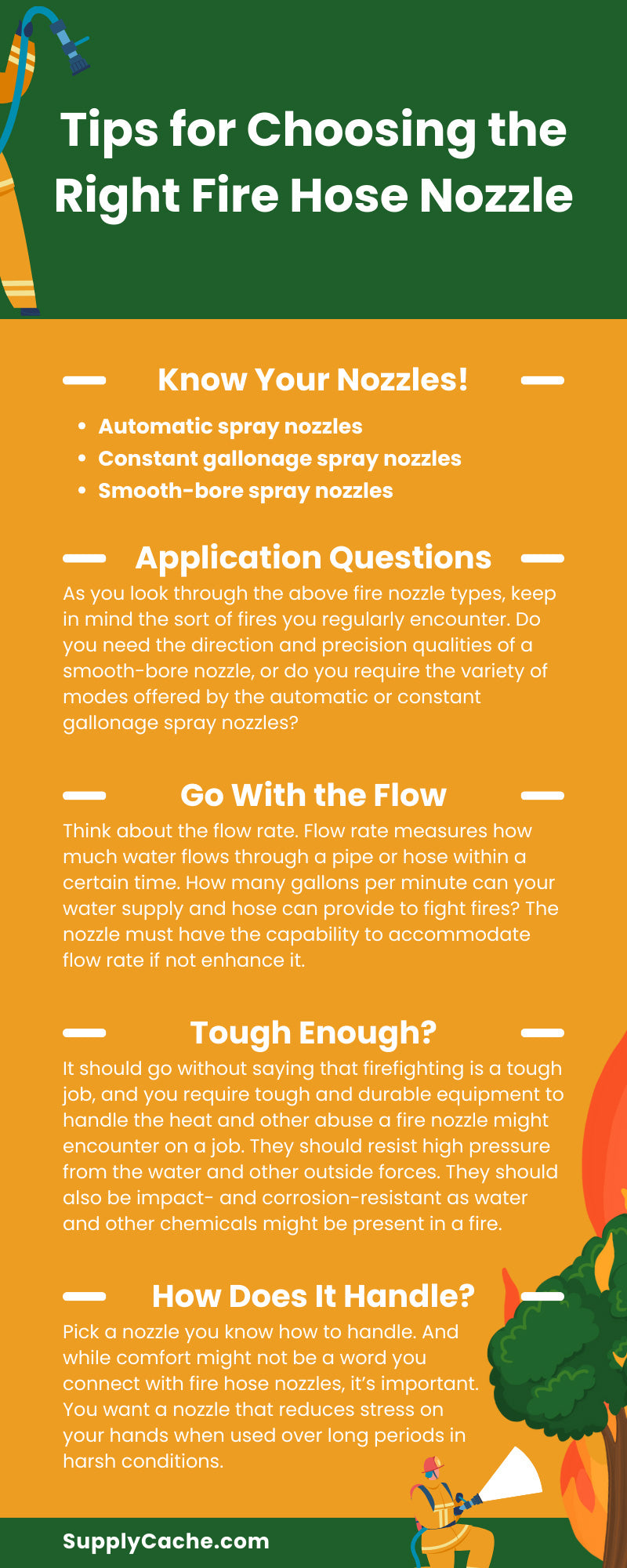
The fire hose nozzle is one of the most important pieces of equipment in your firefighting tool kit. Fire hose nozzles help put out fires by providing concentrated water flow and allowing the user to direct the stream where they need it most in the mode (stream or fog) they require to get the job done. You want a nozzle that provides the power, efficiency, and flexibility that lets you give as good as you get when you’re up against a raging wildfire. Here are six tips for choosing the right fire hose nozzle. Keep them in mind while you shop. It could stop a fire sooner and save a life.
Know Your Nozzles!
As you probably know, nozzles come in different types. Here’s a quick breakdown of the basic three, what they do, and what they’re good for.
- Automatic spray nozzles are handy, and firefighters can easily employ them. They provide constant pressure with a steady stream and are relatively simple to operate. These are classic nozzles that let firefighters direct water at the source of the flame with no drop in pressure. The type of stream is adjustable, and firefighters can alter it to suit the firefighters’ purpose. One drawback is that if water pressure is too high or low, it affects the output of the stream, making it weak, hard to control, or ineffective.
- Constant gallonage spray nozzles ensure that firefighters receive a steady flow of water from the hose measured in, yes, gallons of water per minute. Firefighters can also easily adjust constant gallonage spray nozzles to provide specific kinds of streams, including fog and narrow and straight streams. They can also provide increasingly higher nozzle pressures, but again, they’re dependent on the water pressure received from the water source. Therefore, constant gallonage spray nozzles can be finicky by some accounts. Their complexity makes them more prone to build-up and breakdowns and can be difficult to transport.
- Smooth-bore spray nozzles offer a more affordable alternative to the above nozzles but giving up all those extra features results in a lower price. Smooth-bore spray nozzles offer a single water pattern mode, so no fog or other spray styles. Just a single solid consistent water pattern that firefighters can direct at the fire’s base, which isn’t so bad. They have greater reach and gallonage than other nozzles while employing lower pump pressure. They also reduce deposit build-up and the like because water passes through a cylindrical opening.
Application Questions
As you look through the above fire nozzle types, keep in mind the sort of fires you regularly encounter. Do you need the direction and precision qualities of a smooth-bore nozzle, or do you require the variety of modes offered by the automatic or constant gallonage spray nozzles? Smooth-bore nozzles are good for high-pressure situations that need farther range and deeper penetration, for instance. Fog mode nozzles, however, require less pressure to cover a more widespread area. Or perhaps you’ll require all three to address a variety of conflagrations. Take your time and asses your needs, or rather the needs of the various types of fires.
Go With the Flow
Think about the flow rate. Flow rate measures how much water flows through a pipe or hose within a certain time. How many gallons per minute can your water supply and hose can provide to fight fires? The nozzle must have the capability to accommodate flow rate if not enhance it. Thus, your nozzle must match your hose’s size. Otherwise, there will be a noticeable if not dangerous diminishment in performance.
Tough Enough?
It should go without saying that firefighting is a tough job, and you require tough and durable equipment to handle the heat and other abuse a fire nozzle might encounter on a job. Brass nozzles are famously reliable, but you should also look for heat-resistant construction and coatings. They should resist high pressure from the water and other outside forces. They should also be impact- and corrosion-resistant as water and other chemicals might be present in a fire. Naturally, fire hose nozzles must provide consistent and unimpeded service and toughness but check to see what sort of basic maintenance they require to provide that service longer and decide whether it’s enough or too much.
How Does It Handle?
You wouldn’t think there’d be much to a nozzle. It performs a few basic jobs: concentrating and pointing water at a fire while, perhaps, providing different kinds of streams. But fire hose nozzles can be slightly more complex than your average garden hose nozzle. You may not require much more training in the proper usage of the “fancier” nozzles if you have trained and experienced firefighters operating them. However, you’ll want a nozzle volunteers and part-timers can easily use if you rely on them. Pick a nozzle you know how to handle. And while comfort might not be a word you connect with fire hose nozzles, it’s important. You want a nozzle that reduces stress on your hands when used over long periods in harsh conditions.
The Right Fit
This one should be a no-brainer, but make sure your hose couplings and new fire hose nozzle are compatible. Avoid wasting time and money by discovering one is slightly larger or smaller than the other. Proper fit is vital, so confirm that when you attach the nozzle to the hose. Ensure it’s secure with no opportunities to leak, pop off, or otherwise fail in a pinch. Contact us with information about your equipment and what you’re looking for in a nozzle if you’re uncertain about which one to choose.
Those are just six tips for choosing the right fire hose nozzle. Contact us for a consultation if you have further questions about the right nozzle for the job or any other inquiries about our fire hose nozzles or the other products and services we offer. We’ve been providing safe and reliable wildland firefighting equipment since 1991, offering a wide selection of special gear for tackling the unique needs and dangers of fighting wildfires. Contact us today; we look forward to hearing from you!

